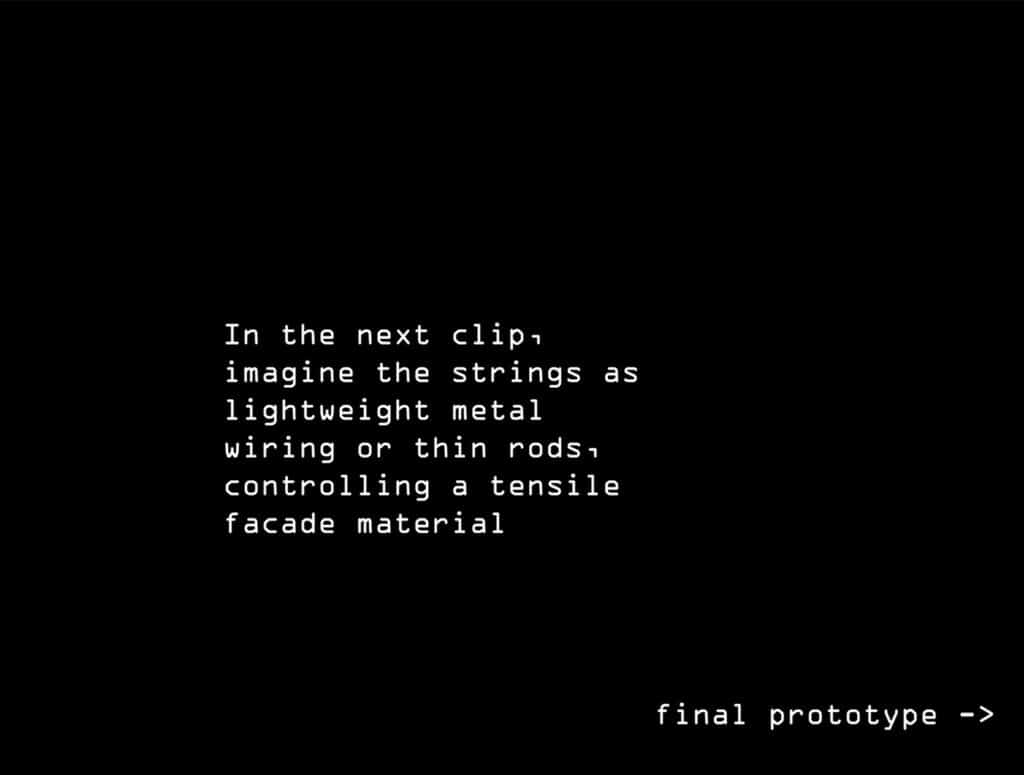Hasan Hirji
The Light Reactive Aperture Device – LRAD facade system uses light to control two motorized arms, extending and contracting a taut wire frame.
This prototype could offer a number of scalable and modular uses. One of these for instance could be creating a light reactive, repeating facade system that expands light shades when the sunlight is brightest and retracts to allow more light to enter the building on cloudy or darker days.
The code allows easy recalibration for arm angles and light ranges, allowing for a highly flexible system.
Concept
The initial concept was based on the kinetic aperture facade found at L’Institut du monde arabe by Jean Nouvel, Gilbert Lézénès, Pierre Soria et Architecture-Studio (pictured below)
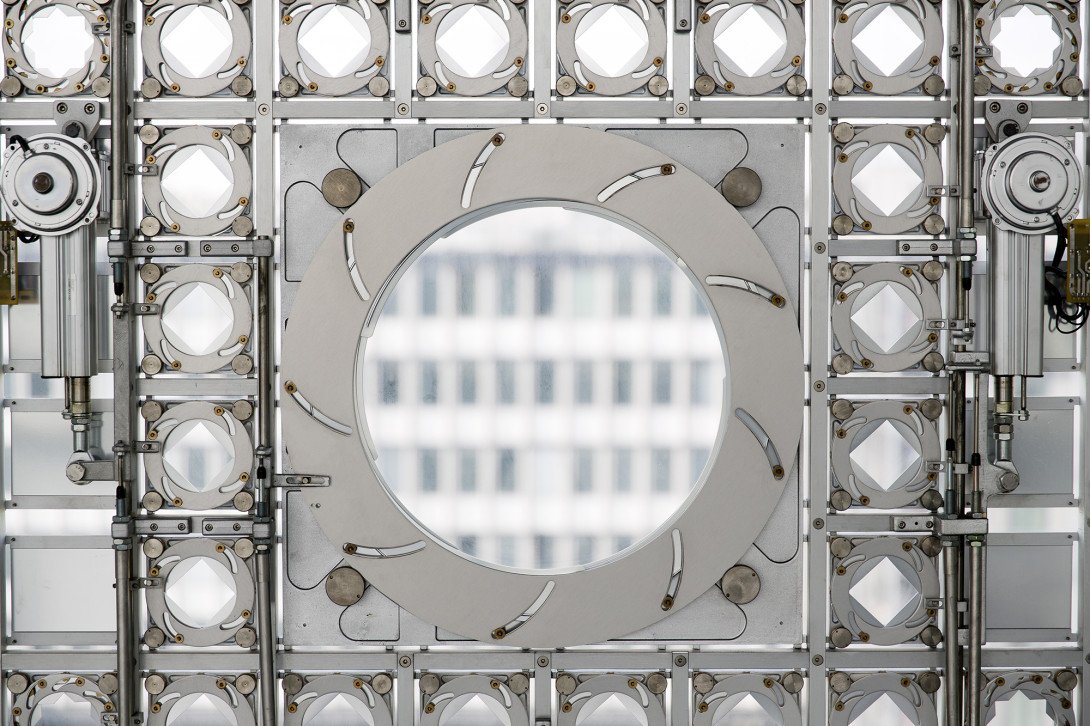
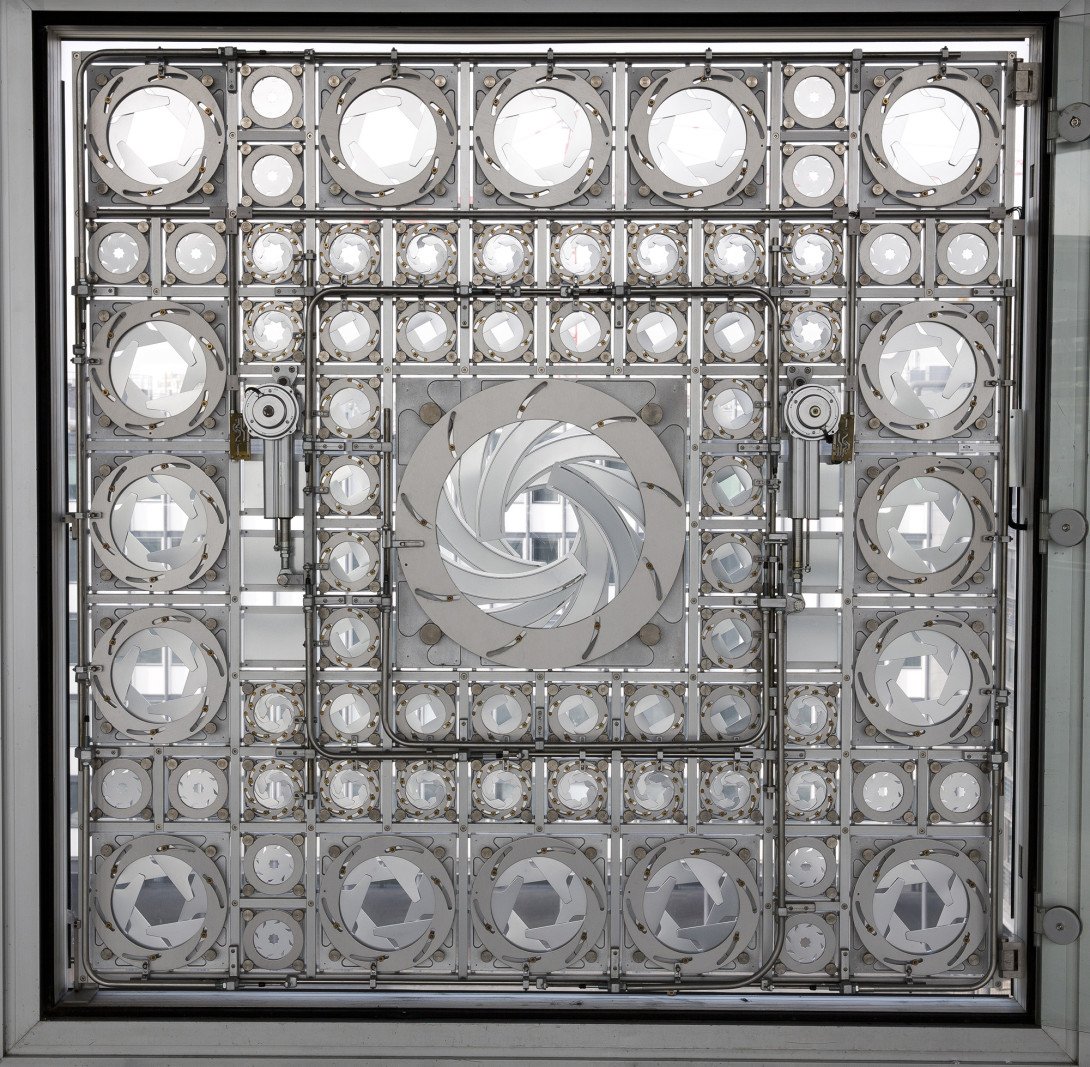
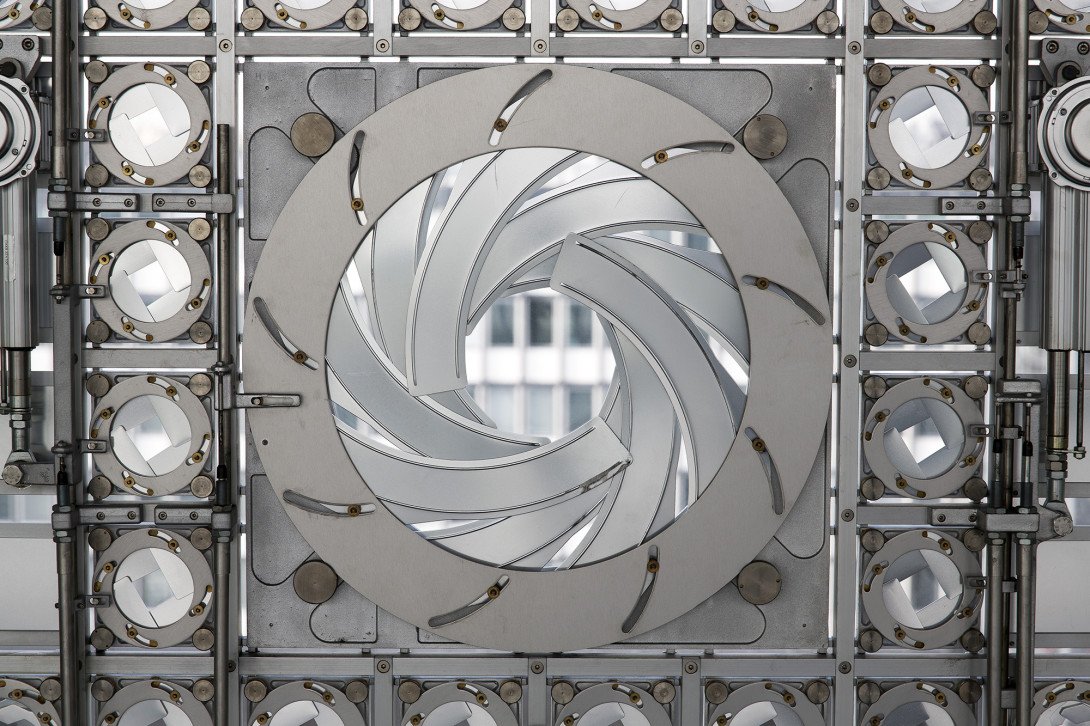
Achieve this through a Light Sensor and Servo Motor?
1 – connect light sensor and servo motor in system
2 – analyse ambient light values in room
3 – determine 3 light range limits based on data (off, ambient, high)
4 – assign motor angles for the 3 light ranges
4 – control motor speed
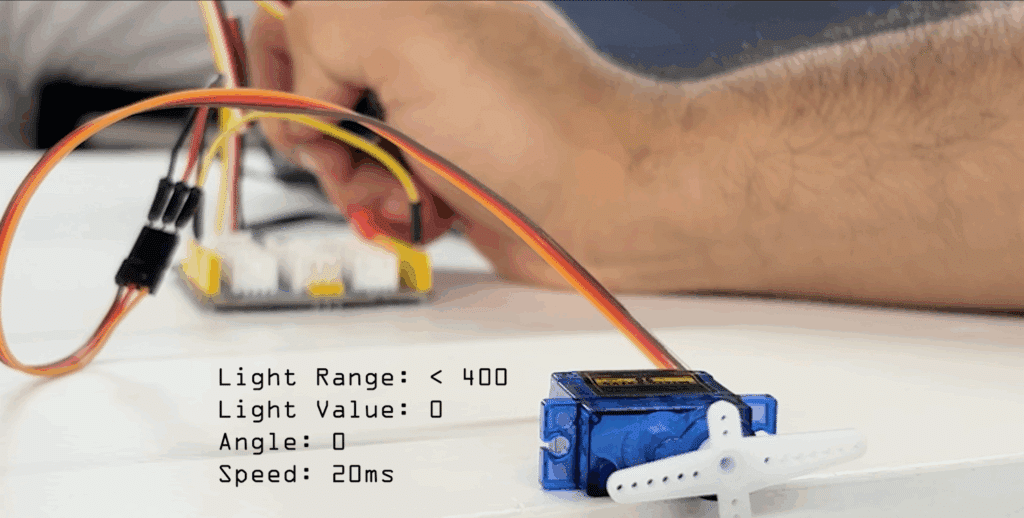
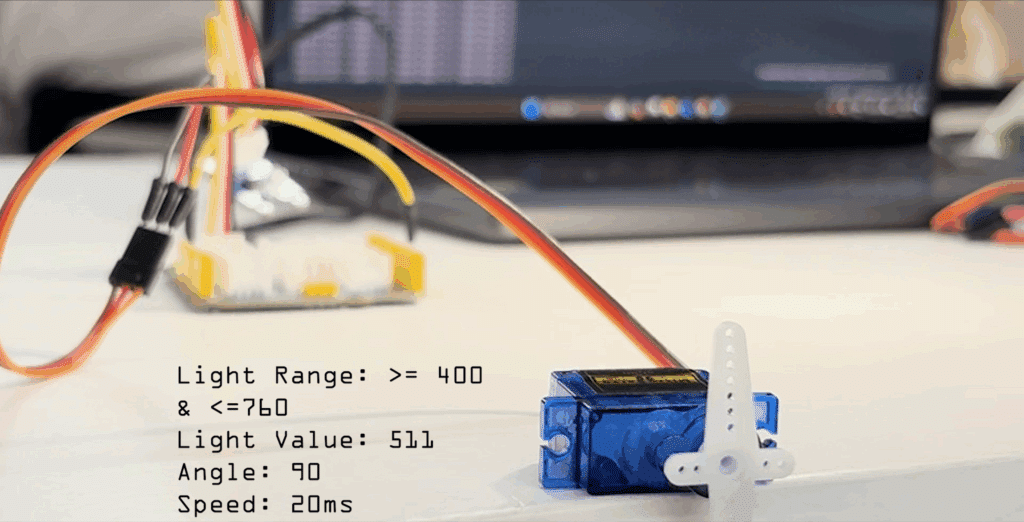
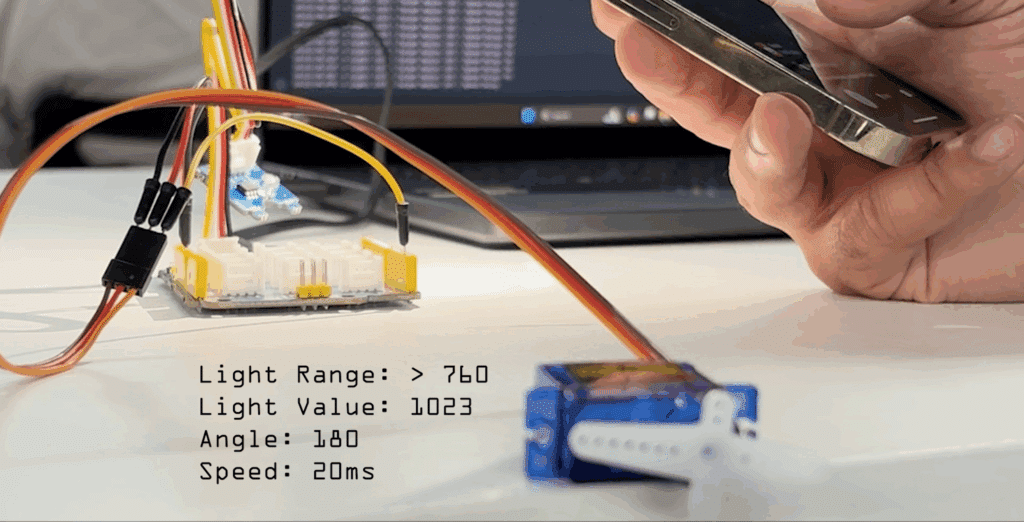
5 – more motors?
Concept Update
Based on the mechanics, the concept developed from a camera-like aperture into a 2-motor system that could tighten and loosen a frame, like the sail of a boat, or curtains on a facade.
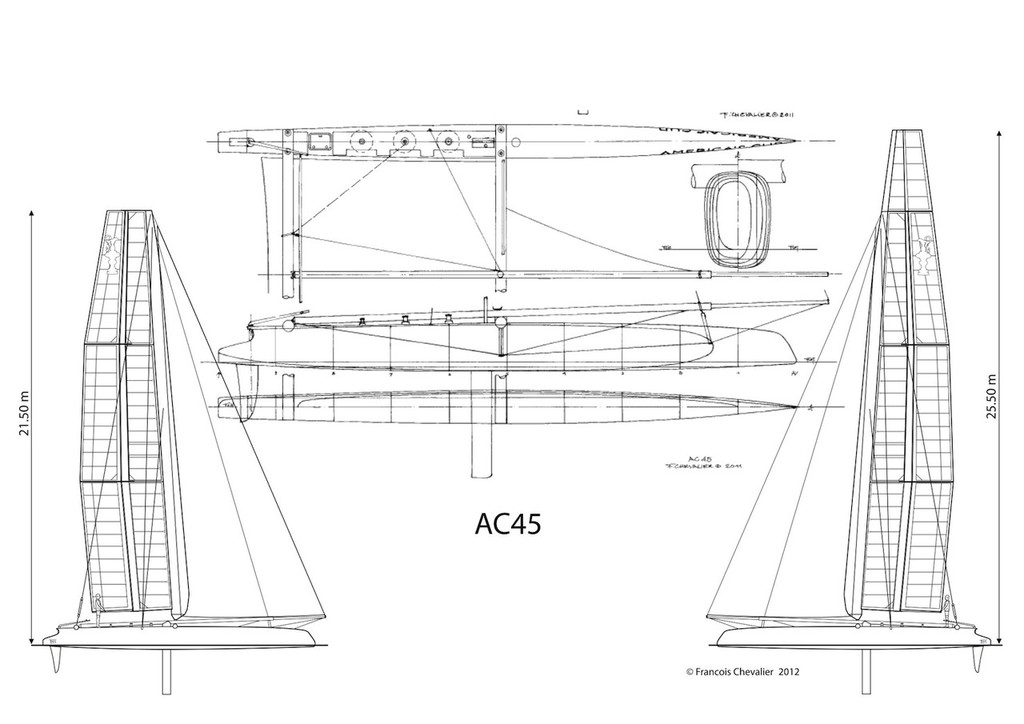
François Chevalier – Lines & Sail plans of the AC45 with its two wing versions – AC45 designs – AC45 lines and sail plans Jacques TAGLANG
Modified Circuit Layout
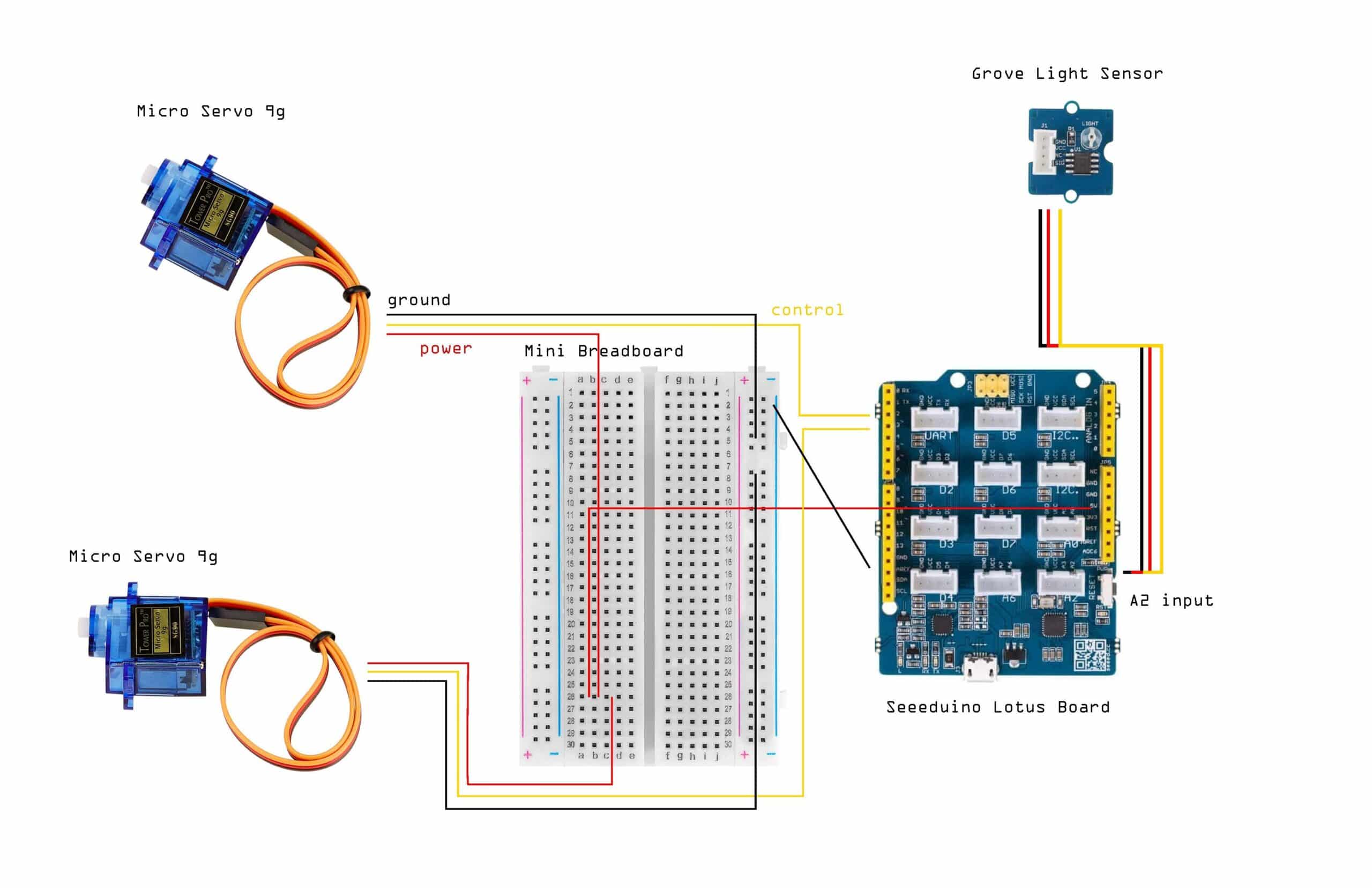
7 x jumper wires
Input: Light Sensor (A2)
Output: Motorized arm movement
Process: Assigns Light Value into 3 ranges corresponding to motor angles
Code
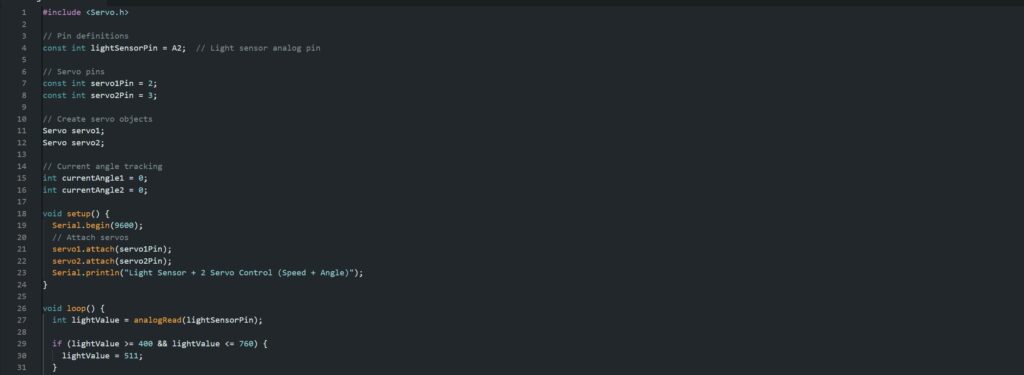
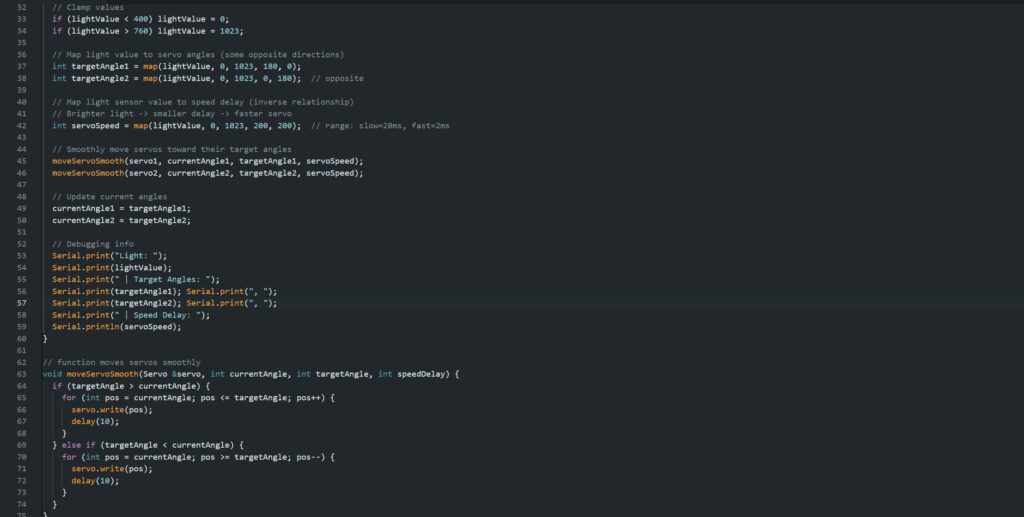
Next Steps?
How could we imagine LRAD system in a modular design, using the different angle possibilities and programmable light ranges?
What kinds of cladding systems could be designed to work with the LRAD?
What other uses might a system like this offer?
